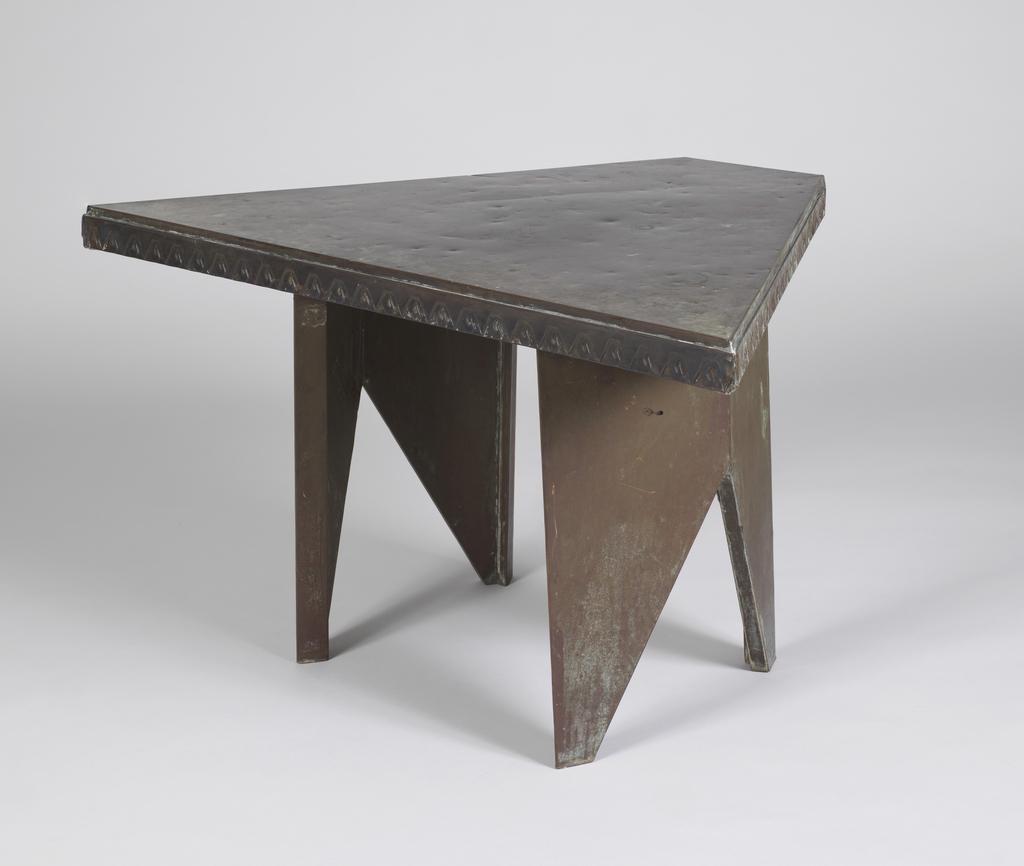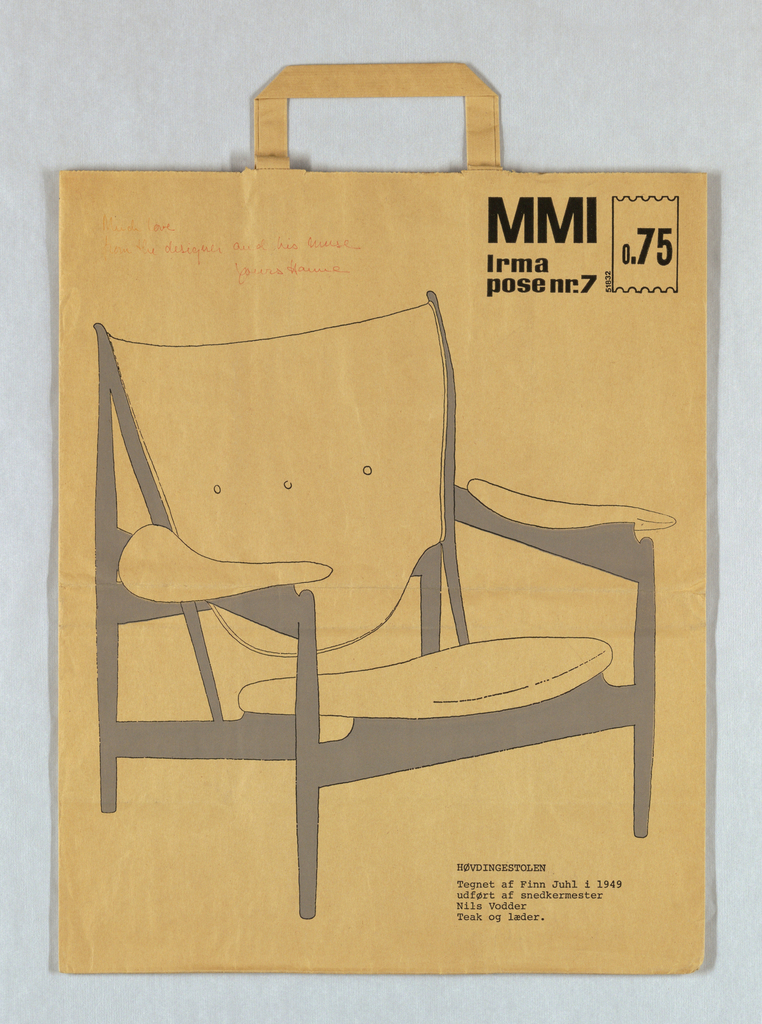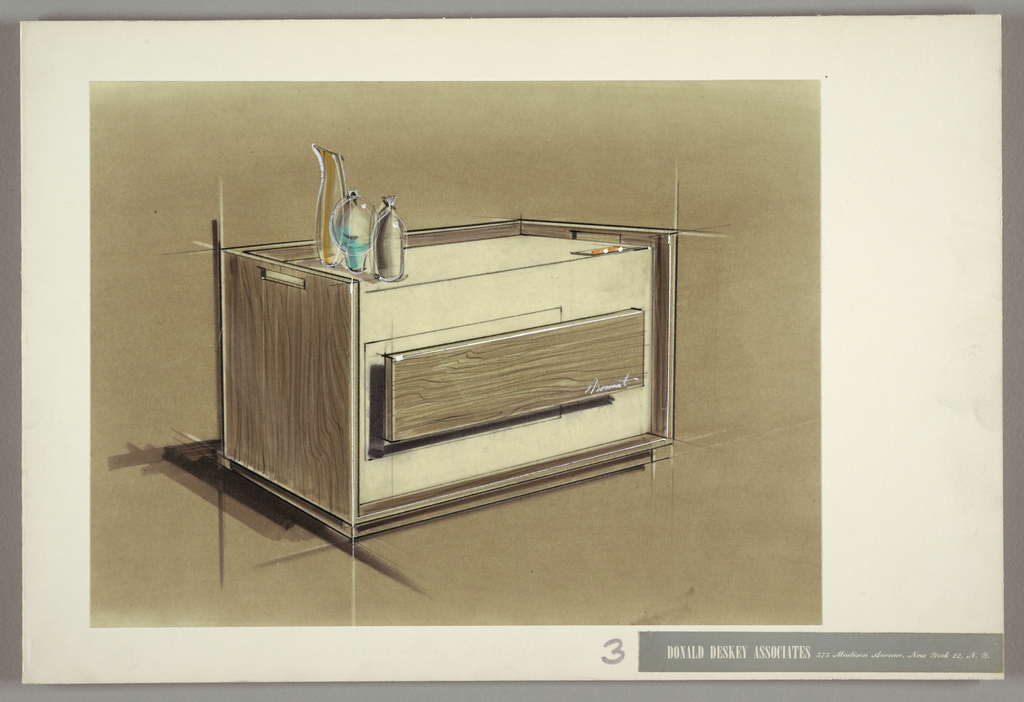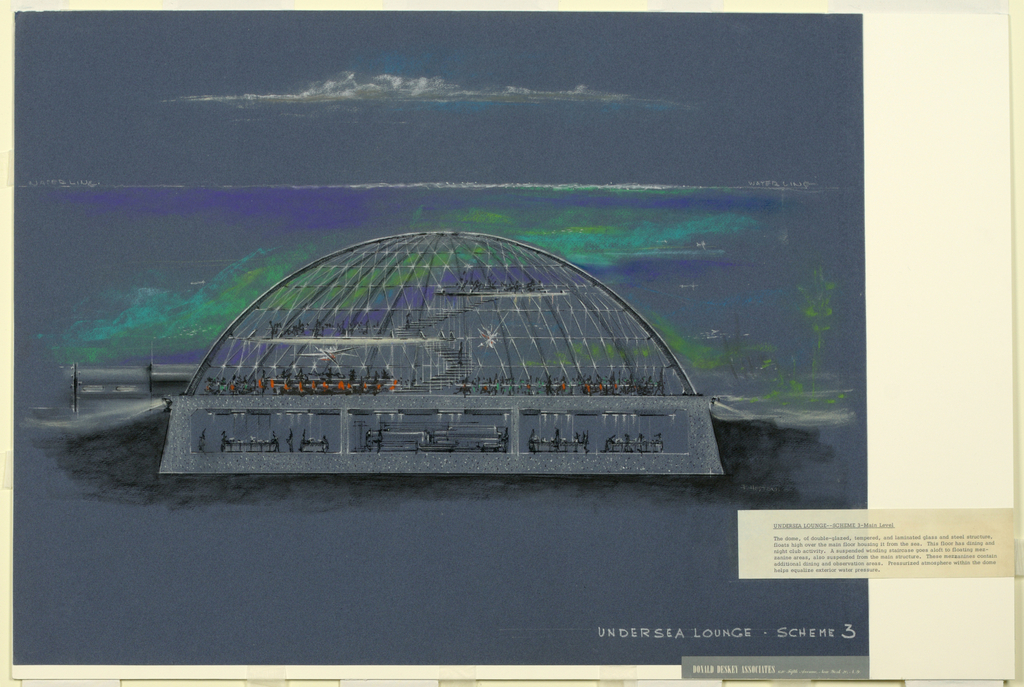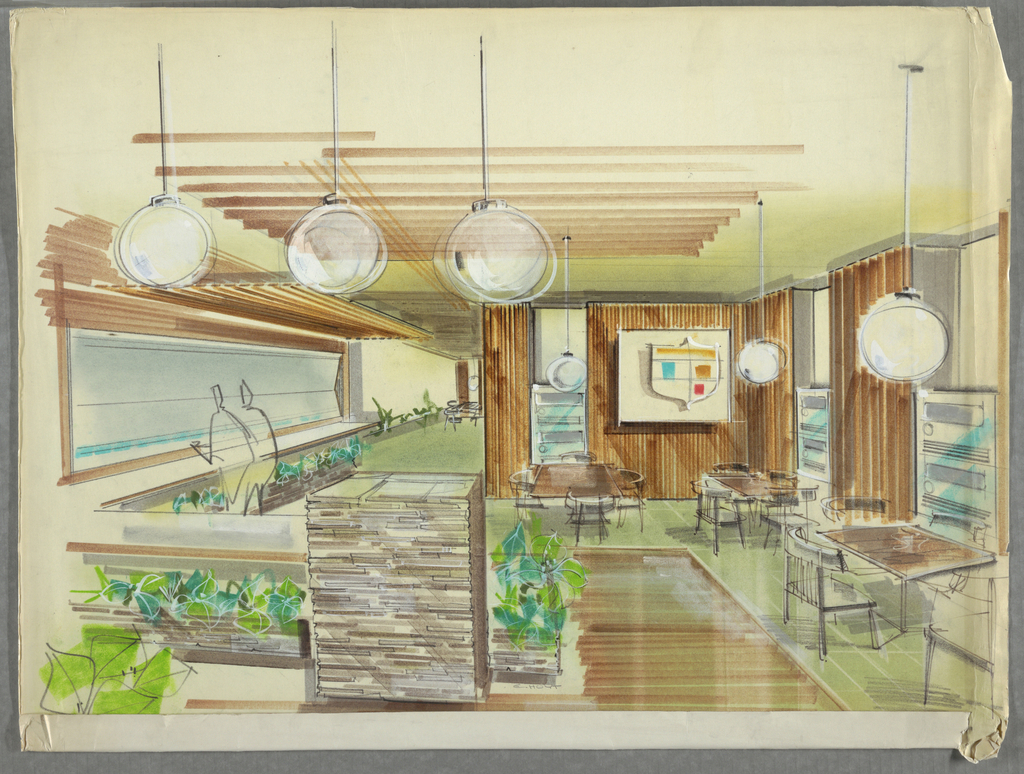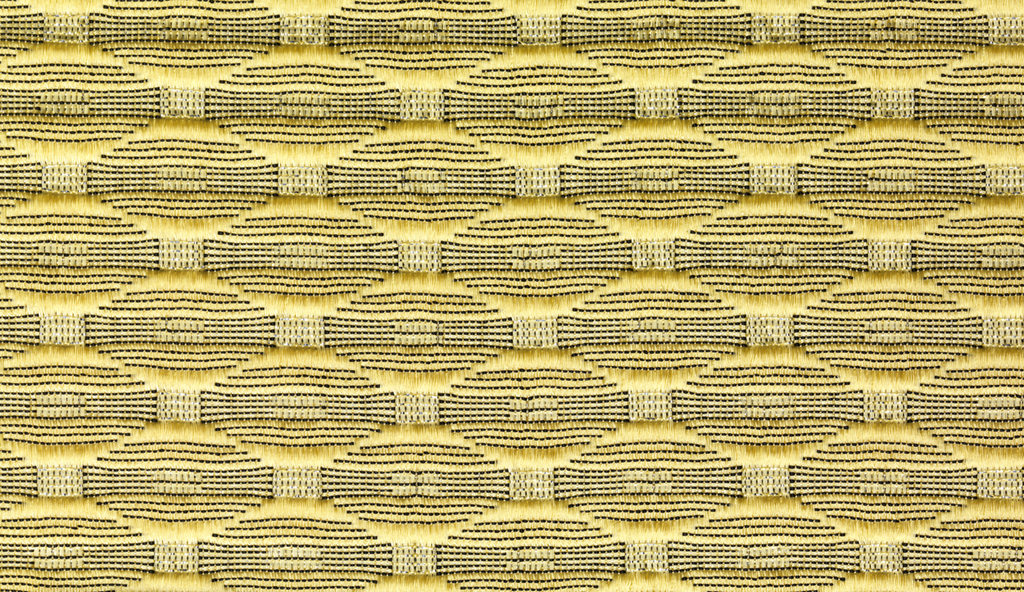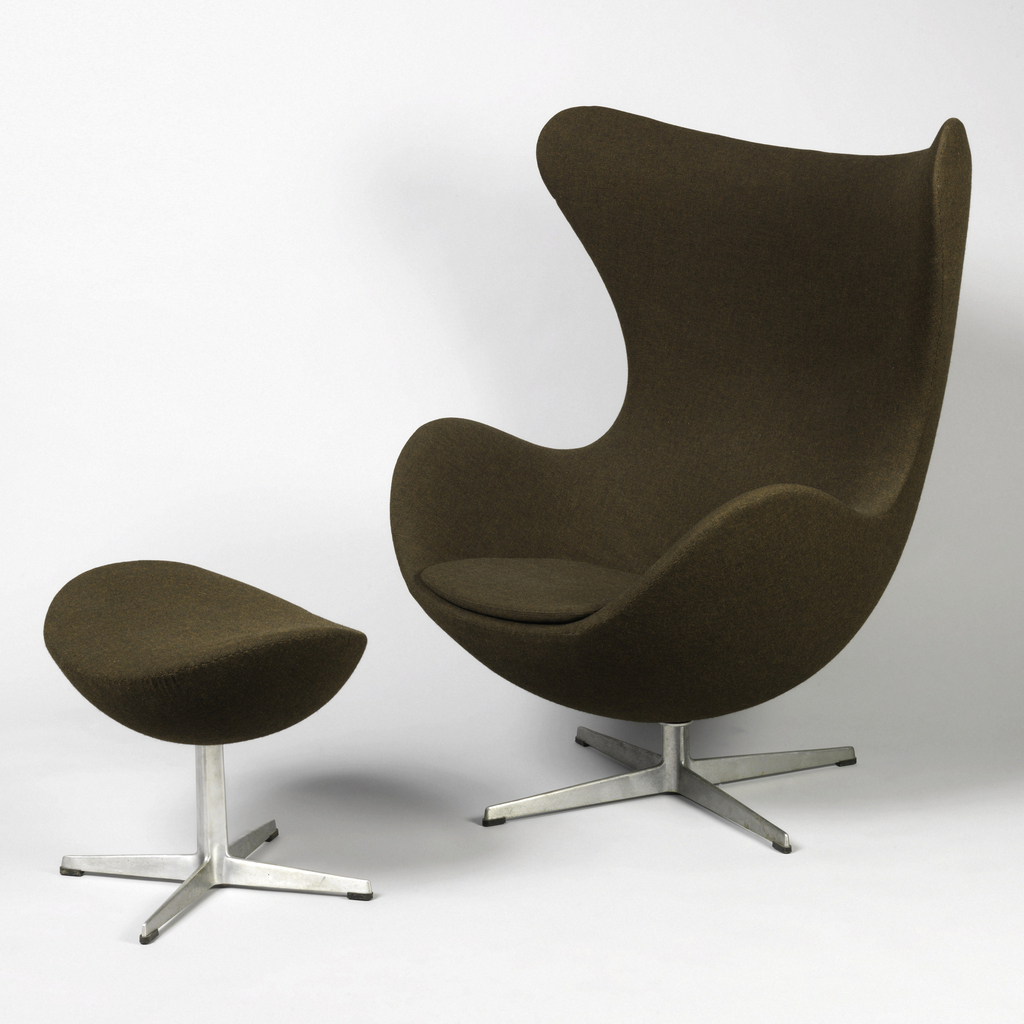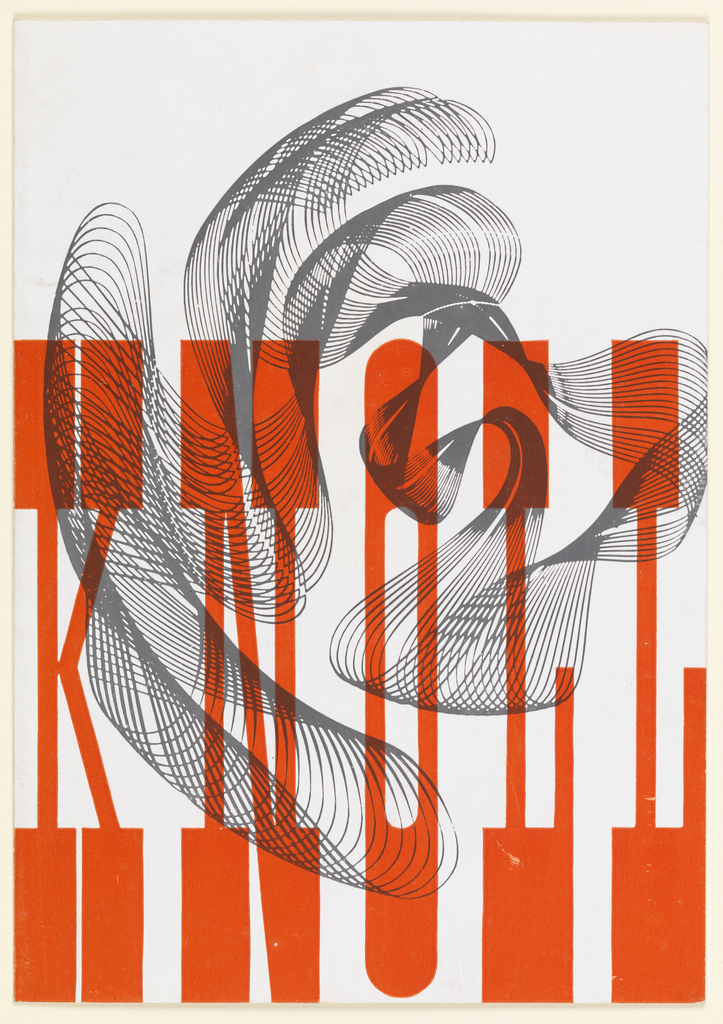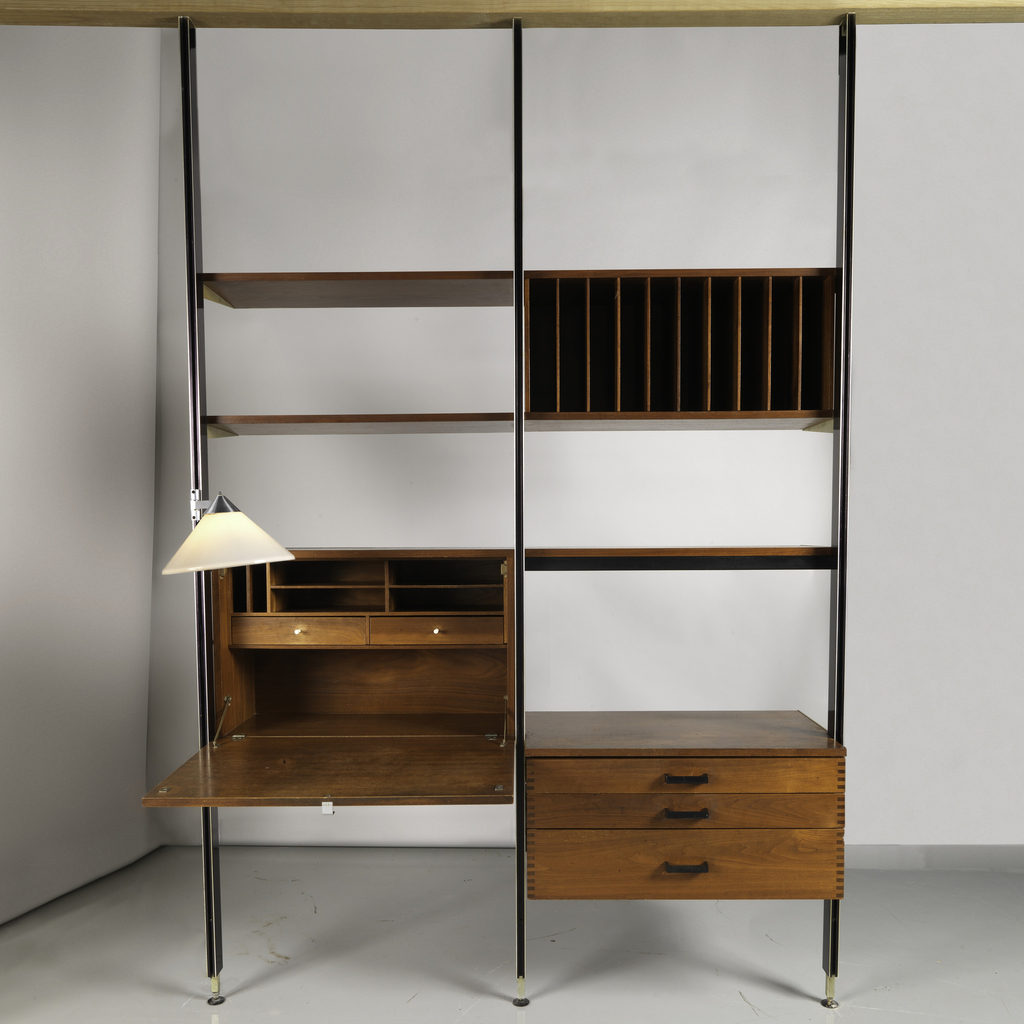Clad in copper, this odd, angular table was designed by the American architect, Frank Lloyd Wright. It was part of a suite of furniture and built-in features Wright created in 1956 for Price Tower, a skyscraper the architect built in the small town of Bartlesville, Oklahoma.[1] The building was commissioned by Harold C. Price to...
This mid-twentieth century shopping bag celebrates an icon of Danish Modern furniture design. The bag, created in 1949 by Mike Romer and Ida Fabricius, is embellished with a boldly rendered illustration of the Chieftain chair (Høvdingestolen), designed in that same year by Danish architect and furniture designer Finn Juhl. With its dramatically curved leather upholstery...
In ancient Greece, air (along with earth, water, fire, and aether) was one of the five elements thought to comprise all substances. Questions of air quality began to arise in the Middle Ages, even before the composition of the atmosphere was discovered.[1] In the eighteenth and nineteenth centuries, as coal became deeply entrenched in both...
In the early twentieth century, designers often put their work out to sea. Le Corbusier, Swiss-French pioneer of modern architecture, wrote in his seminal 1931 treatise Towards A New Architecture that “a seriously-minded architect (…) will find in a steamship his freedom from an age-long but contemptible enslavement to the past.”[1] The next year, American...
In a 1947 article on frozen food for Popular Mechanics, Andrew Hamilton anticipated that “before long you may see frozen dinners served in hotels, trains, planes, ships, factories, offices and your own home.”[1] Earl E. Hoyt Jr., designer and draftsman at Donald Deskey Associates (DDA) between 1960 and 1965, sought to realize Hamilton’s prophecy in...
To celebrate the opening of Saturated: The Allure and Science of Color, Object of the Day this month will feature colorful objects from the exhibition. This post was originally published September 4, 2012. America, 1957. Eisenhower was the President. Elvis was “the King.” And Ford Motor Company introduced its new 1957 automobiles, a “new kind...
The Danish designer Arne Jacobsen believed in the artist’s complete control over a project. Though originally trained as an architect, he had a hand in all aspects of his buildings’ designs, including the interiors. His works might be considered examples of Gesamtkunstwerk, or the total work of art, because of his individual and obsessive control...
The architect and designer Florence Knoll described the work of the seminal, Swiss graphic designer Herbert Matter, “Everything was clear cut with imagination and even in some cases artistic whimsy…”[1] Their introduction sparked a creative partnership at Knoll in 1946 and Matter lent his diverse and exceptional talents to numerous artistic projects, including the company’s...
Herman Miller introduced George Nelson’s Comprehensive Storage System (CSS) in 1959 and produced it until 1973. Available in a variety of wood finishes, the CSS could also be customized to fit the needs of customers, thanks to its modular units that included shelves, drawers, and desk units, such as the CSS in the museum’s collection....
